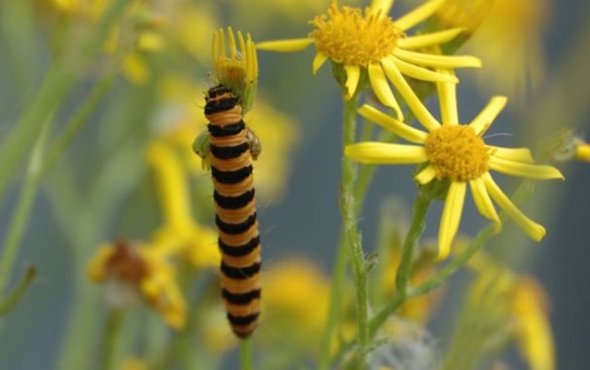This is Scientific American — 60-Second Science. I'm Karen Hopkin.
Nature may be red in tooth and claw. But one plucky caterpillar dresses in orange and black to avoid becoming somebody's lunch. What's really surprising, though, is that this distinctive set of stripes can serve as both a warning or as camouflage, depending on how far away it is from the viewer.
Animals can deploy color as a defense mechanism in a couple of ways. Some shades and patterns help potential prey blend into the background. Whereas bold markings often serve as a signal that an animal is unpalatable—for example, chock full o' toxins.
"So, these two strategies have often been considered in isolation and often seen as mutually exclusive and alternative mechanisms. But under natural conditions you find this distinction is less clear cut."
Jim Barnett of the University of Bristol, who led the study to explore whether the same coloration might do double duty, allowing an animal to be obvious under some conditions but unseen in others.
They focused their attention on the caterpillars of cinnabar moths. These larvae sport bright orange and black stripes. Their vivid appearance was believed to remind the birds who may have eaten others of their kind that they are none too tasty, thanks to their diet of alkaloid-rich ragwort plants.

The researchers snapped photos of the caterpillars in suburban green spaces around Bristol. And they used a visual modeling program to give them a "bird's-eye view" of what the caterpillars look like, either close-up or from farther away.
"And what we found is that although at close range the caterpillar's stripes are highly conspicuous—these bright colors distinguish it quite easily from its ragwort background—but when viewed from a distance they blend together to form a color which is actually quite difficult to discern from the background color. So, what we think is going on is that the caterpillar is getting the best of both worlds."
Close up, the stripes say keep your distance. But from a distance, they allow the caterpillars to hide in plain sight. The results can be seen in the journal Royal Society Open Science.
The finding is a reminder: Don't forget to step back and see things from a different perspective.
Thanks for listening for Scientific American — 60-Second Science. I'm Karen Hopkin.












